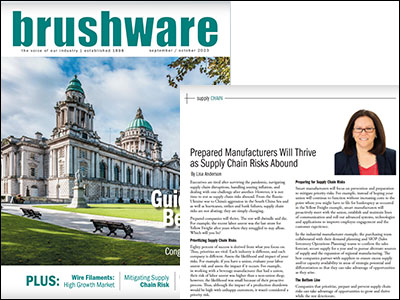Executives are tired after surviving the pandemic, navigating supply chain disruptions, handling soaring inflation, and dealing with one challenge after another. However, it is not time to rest as supply chain risks abound. From the Russia-Ukraine war to China’s aggression in the South China Sea and as well as hurricanes, strikes, and bank failures, supply chain risks are not abating; they are simply changing.
Prepared companies will thrive. The rest will dwindle and die. For example, the recent labor unrest was the last straw for Yellow Freight after years where they struggled to stay afloat. Which will you be?
Prioritizing Supply Chain Risks
80% of success is derived from what you focus on. Thus, priorities are vital. Each industry is different, and each company is different. Assess the likelihood and impact of your risks. For example, if you have a union, evaluate your risk of labor unrest, and assess the impact if it occurs. For example, in working with a beverage manufacturer that had a union, their risk of labor unrest was higher than a non-union shop; however, the likelihood was small because of their proactive process. Thus, although the impact of production shutdown would be high with unhappy customers, it wasn’t considered a priority risk.
In another example, a household manufacturer purchased materials from China and so had a high likelihood of disruption if China gets into a conflict with a neighbor in the South China Sea, yet they had a low impact since they have been purchasing 20% of their materials from a backup supplier in the U.S. who agreed to ramp up as needed. In this case, although the likelihood of risk is high, the impact is low, and so it wasn’t a priority. On the other hand, an industrial manufacturer purchased a key material from the Russia/ Ukraine region and didn’t have an alternate supplier outside of the region. Thus, not only was the likelihood high, but the impact was also high since it could shut down production, elevating it to a top priority.
Preparing for Supply Chain Risks
Smart manufacturers will focus on prevention and preparation to mitigate priority risks. For example, instead of hoping your union will continue to function without increasing costs to the point where you might have to file for bankruptcy as occurred in the Yellow Freight example, smart manufacturers will proactively meet with the union, establish, and maintain lines of communication, and roll out advanced systems, technologies, and applications to improve employee engagement and the customer experience.
In the industrial manufacturer example, the Purchasing team collaborated with their demand planning and SIOP (Sales Inventory Operations Planning) teams to confirm the sales forecast, secure supply for a year, and to pursue alternate sources of supply and the expansion of regional manufacturing. The best companies partner with suppliers to ensure excess supply and/or capacity availability in areas of strategic potential and differentiation so that they can take advantage of opportunities as they arise.
The Bottom Line
Those companies that prioritize, prepare, and prevent supply chain risks will be able to take advantage of opportunities to grow and thrive while the rest deteriorate.
Originally published in Brushware, September – October 2023



